May 18, 2020
Open Banking & Australia: Ready for Banking As A Service Platforms?

Without any unexpected delays to roll-out, it is expected (at the time of writing) that banks and financial institutions across Australia will adhere to the ACCC’s released Consumer Data Right (CDR) legislation. One of the reasons for this is the now well-understood force of digital disruption from open banking, seen around the world in various models including Europes PSD2 mandates.
In addition to legally requiring the four major banks to share product reference data with accredited recipients, the rules clarify the parameters of the new system and give “legislative force” to the obligations in banking that become mandatory from 1 July 2020, detailing the rights, responsibilities, and possible penalties for all parties involved.
At the core of these directives is the need for banks to grant third-party providers access to customer accounts, payments, product data and other data through APIs. Non-compliance is not an option and the banking industry is having to embrace an ecosystem-based operating model in contrast to what is traditionally a guarded and siloed industry.
So how does a bank profit from these scenarios? In this blog series we have discussed a number of options.
In this blog we will be discussing banking-as-a-service.
Open Banking APIs are valuable assets for financial services firms, as they enable them to enhance their service offerings, improve customer engagement, and build new digital revenue channels.
To build an effective Open Banking API strategy, financial services firms must be able to future-proof their technologies to ensure agility and speed, create lucrative APIs that are monetised as a source of competitive advantage, and deliver these securely. Some of these strategies are built into a single service platform, under the moniker of ‘Banking-As-A-Service’.
A “banking-as-a-service” model – essentially enabling businesses without a banking licence to deliver banking services from a licenced bank digitally via APIs, or application programming interfaces – is a promising concept in global financial services, although common in other industries such as software development.
So what is banking as a service?
Here’s a detailed breakdown of a basic API-based Banking as a Service stack:
- The bottom level represents the traditional, nationally-chartered financial institution (bank) that partners with the BaaS provider. Now commonly known as the “infrastructure provider”.
- The middle represents the “Bank-as-a-Service” layer that maps out banking services customized as an ecosystem for fintechs and payment providers to deliver products to end users. This part of the stack sends data back and forth between the bank and the fintech through an intermediary.
- The top layer is the fintech company that interfaces with the end user — receiving data from customers on transaction requests that it sends to the BaaS layer. The BaaS provider also sends data from the bank to the FinTech as responses to transactions requests.
Additionally, banks in this model can develop Banking-as-a-Platform (BaaP) and allow companies to directly plug into their core infrastructure for banking products on-demand — and charging for access along the way.
Recently Westpac announced that they are teaming up with a UK based cloud-native banking technology provider to build a similar platform to the one described above. This greenfields platform will enable third parties – ie fintechs – to distribute Westpac banking products to their clients. This will be a major shake-up of their core banking technologies and a huge competitive advantage for the Australian major bank.
The power of banking-as-a-service all drills down to the API layer – through transforming banking into a platform business model, banks can expose existing and new functionalities to participate in the market, partner with fintech firms to enhance services and monetize APIs, and, most importantly, embed their position within the value chain of financial products.
Stay tuned for our upcoming webinar:
Banks and financial institutions in Australia face a looming July 1 deadline to meet Open Banking and CDR compliance legislation this year. But, when it means making a significant change to your business strategy, internal systems and technology infrastructure, Australian organisations can fall behind. In this webinar, we’ll be discussing covering:
The Reality: Where Australian financial institutions stand in their open banking journeys
The Problems: What challenges they are facing
An Ideal Scenario: Critical success factors for a winning open banking strategy and implementation
The Requirements: Capabilities internal and external required to excel in open banking
Tuesday, 26th May at 1.00pm AEST
About Innovo Technology & MuleSoft Open Banking Provider Solution:
At Innovo, we’re a development and software testing organisation with experience working with external standards and payments processing systems. We’ve recently partnered with MuleSoft to help Australian finance, insurance and superannuation organisations overcome the CDR and Open Banking challenges.
Our solution involves the application of experienced Open Banking architects and developers who work on a pre-built Innovo & MuleSoft solution that is more than just an API. With an integrated layer of people and technology, our solution is taking pre-configured and customised, and quickly deployed – allowing your business to hit regulatory deadlines and in delivering a solution which is fit-for-purpose now and scales for the future.
The platform provides API hosting, Developer self-service portal, Identity Management (including strong authentication), a testing environment that mimics production behaviour, and the ability to integrate to an internal integration bus in either on-premise or cloud environments.
The Innovo solution is built on proven market leading MuleSoft technology, with all the integration and customisation required to deliver an Open Banking solution already done for you and available OTS.


